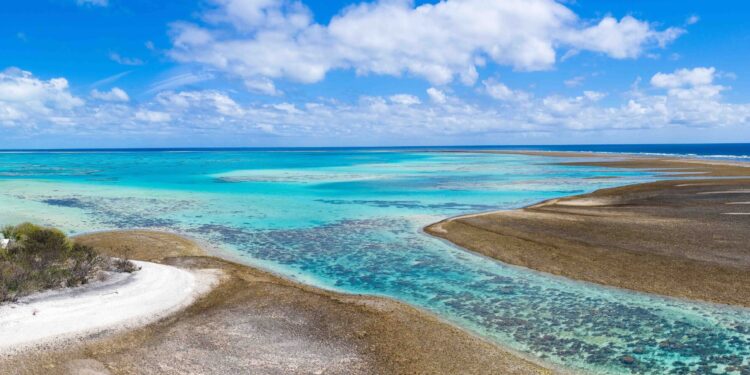One Tree Island Research Station on the Great Barrier Reef. Credit: University of Sydney
New research from the University of Sydney shows that international conservation efforts account for around 10% of coral reef fish stocks.
The global study, published in Proceedings of the National Academy of Scienceswas led by Professor Joshua Cinner from the School of Geosciences and lead analyst Dr Iain Caldwell from the Wildlife Conservation Society. The international research team also included scientists from the United States, United Kingdom, Kenya, France and Germany, among others.
By examining fish survey data from nearly 2,600 tropical reef sites, the team developed a model that shows that about 10 percent of fish biomass (the number and size of fish in an area ) can be attributed to existing protections.
Professor Cinner, director of the Thriving Oceans Research Centre, said: “Millions of people depend on reef fish for their livelihoods and food. However, overfishing seriously threatens the well-being of coastal communities around the world. actions and have indirect benefits for people.
“Our study really tested the mettle of global coral reef conservation. On the one hand, we found that conservation efforts have contributed to the amount of fish on global coral reefs, which is promising But on the other hand, this contribution seems quite modest and our study clearly shows how much room for improvement there is.
Coral reefs around the world are under considerable pressure from a wide range of human-caused impacts, including climate change, pollution and overfishing.
Marine protected areas (MPAs) are sections of the ocean in which a government has placed restrictions on human activity and are a highly touted tool for preserving marine habitats. Currently, MPAs cover only a fraction (around 8%) of the planet’s oceans, but this situation is expected to grow rapidly in the years to come.
At the 2022 UN Biodiversity Conference, 196 countries adopted the Global Biodiversity Framework and committed to protecting 30% of the world’s terrestrial, freshwater, coastal and marine areas by 2030 , an initiative commonly known as 30×30. The authors hope their study will help maximize the benefits of this initiative.
Professor Cinner said: “Our modeling showed we could get up to 28% more fish on coral reefs globally by increasing the coverage of fully protected reefs to 30%, but only if these reefs are chosen strategically. »
Dr Iain Caldwell, of the Wildlife Conservation Society, said: “No fishing zones punch above their weight, especially when they are well enforced, but they are not the only way to increase fish populations. While increasing fish biomass per unit of protected area is most important, other forms of fisheries management may also be effective and more responsive to people who depend on reef fish for their lives and livelihoods .
More than 50% of the coral reefs studied had no fishing constraints. So the research team analyzed what would happen if fishing restrictions, such as banning nets or harpoon guns, were put in place on all currently unmanaged coral reefs.
Using their predictive model, the researchers found that global coral reef fish stocks would increase by another 10.5%, essentially matching all conservation efforts to date.
Professor Cinner said: “Fishing restrictions are not as effective as no-fishing MPAs on an area basis, but they tend to be less controversial with fishermen, meaning they can be better respected and that they can be implemented on a very large scale. Maintaining coral reef fish populations will require the use of all available tools. »
More information:
Caldwell, Iain R. et al, Protection efforts have resulted in approximately 10% of existing fish biomass on coral reefs, Proceedings of the National Academy of Sciences (2024). DOI: 10.1073/pnas.2308605121. doi.org/10.1073/pnas.2308605121
Provided by the University of Sydney
Quote: Environmental protections represent about 10% of fish stocks on coral reefs, according to a global study (October 7, 2024) retrieved October 7, 2024 from
This document is subject to copyright. Except for fair use for private study or research purposes, no part may be reproduced without written permission. The content is provided for informational purposes only.



